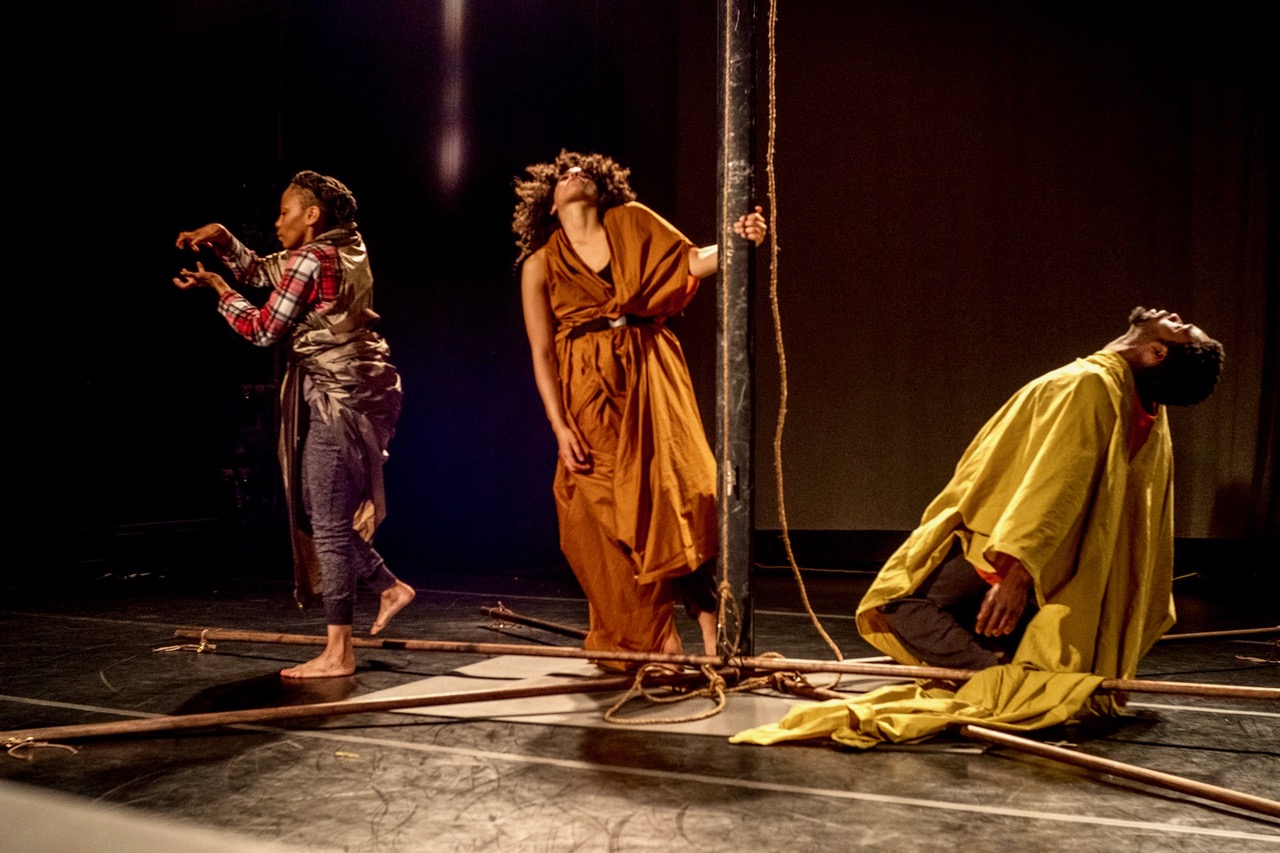Stefanie Batten Bland Explores Memory and Voyage in Her Newest Work
For Stefanie Batten Bland’s latest work, Embarqued: Stories of Soil, the choreographer added some unique collaborators to her creative team: a fisherman and a boat captain. Centered around a large ship mast, Embarqued, which premieres at North Carolina’s Duke Performances April 15–16, was developed at The Yard on Martha’s Vineyard, inspired by the island’s African American Heritage Trail. It explores ideas of memory and memorialization through the lens of African ancestral stories.

It sounds like this was a research-heavy piece. What was that process like?
It was completely accidental. I was standing in the supermarket on Martha’s Vineyard, and I happened upon this book about the African American Heritage Trail. Then I started noticing how present the trail markers were and how they were such regular parts of daily lives, as opposed to monuments that you have to look up to. These were made with rocks and things that you find on the island that people just add to as they move through their lives. And I thought that that was such an exciting way to express memory, because you’re actively being a part of the memorialization. My youngest son picked up a pebble and added it to what used to be the home of a freed slave—it’s really amazing to watch anyone participate. And that just spun me down the line of going on the trail and discovering the different areas.
How does that show up in the work?
Embarqued is taking place on the board of a ship, at the feet of new land, or old land, wrapped up in the stories that made this land. We’re telling stories inspired by the Heritage Trail that are really paying homage to the idea of memorialization and how we’re interpreting the idea of making memorials so that they live both in the past as well as the present. And these are stories that take place through fabric in particular, as textiles are often there in place of written testimonies—they somehow make it through the centuries. It’s a work that allows us to honor all the ways in which stories are told, and all the ways both positive and horrific in which voyage occurred and the population of the United States occurred.
How did you end up working with fishermen?
One of the women who worked at The Yard, her husband is an extremely well-known fisherman, and we had access to boating materials that were no longer being usedor things that washed up that he could identify. My scenic designer also happens to be a boat captain. And these wonderful ideas started taking form through trial and error. We created the replica of what a schooner mast would be of that era with true boat materials. And we’ve now turned all those items into theatrical materials because you can’t tug along a huge steel thing.
Why are textiles so important to you and your work?
I think I must be a failed visual artist because that’s all I ever work with. I’ve always been attached to how items help us tell stories, because I think quite often we’re less keen to touch someone else’s hand. But surely, “Hey, could you pass the pepper?” And then, next thing you know, you’re touching hands.




